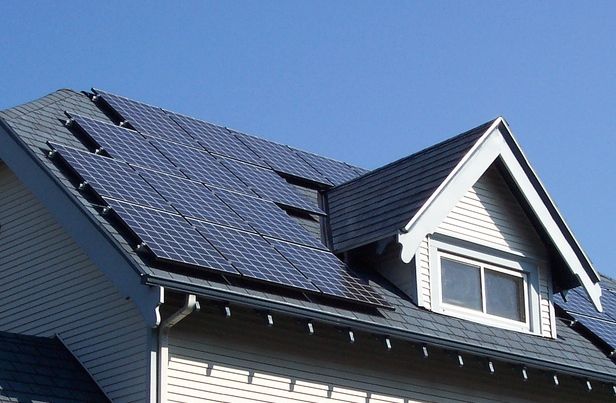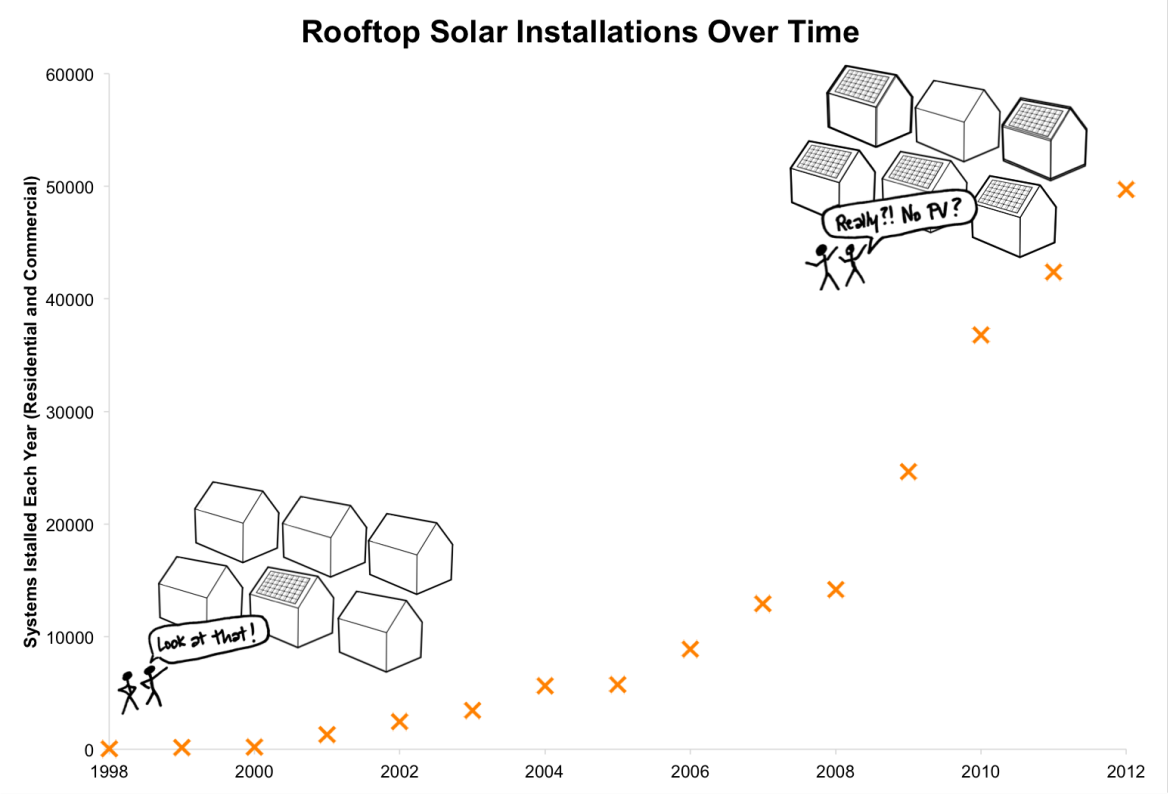
MJ Monty, via Flickr (creative commons)
Rooftop solar panels are increasingly popular and affordable, but solar accounts for less than one percent of American electricity.
In the ongoing battle between traditional utility companies and solar power, the sun scored some points last week. After complaints from rate payers in South Dakota, Montana, and Wyoming, Black Hills Power dropped a proposed rate increase for customers with rooftop solar. But the South Dakota did not rule out reintroducing the surcharge, once they have had more time to discuss with customers.
“We understand that it’s complicated,” Vance Crocker, Black Hills Power’s vice president of operations, told the Rapid City Journal. “We want to educate our customers about it and have a dialogue with our customers.”
In Inside Energy’s Solar Challenge Series, our team reported that this struggle is going on across the country in states like Arizona, Utah, and Wisconsin where utilities have proposed, and sometime succeeded, charging customers solar fees. But solar power accounts for a fraction of one percent of all US electricity production. So why do large utility companies care so much? Deb Theriault of Casper-based Range Solar & Wind thinks it come down to profits.
“Whether the electrons that we produce go into our house and we never buy those electrons from the utility or we over-produce in our house and those electrons go back to the utility, we are not putting anymore wear and tear on their infrastructure. It looks to me like they’re just trying to recover the cost of the power that we’re not buying form them anymore.”
And although renewables, including a small amount of solar, only accounted for 10% of electricity consumed in the US in 2013, according to a new report by the International Energy Agency, solar power could be the world’s main energy source by 2050.
Theriault believes that as long as people continue to care about the environment, utility companies will have to come up with a better, more thoughtful way to bill their customers.
“When the wind and the sun don’t cost anything, it is the infrastructure that has the expense. And that’s why there is this tug of war. Because there is a cost of fuel when its fossil fuel for extraction and processing and all of that stuff. So the way the rate structures are composed now, it has to change in order to fit renewables into it. Because renewables only have the infrastructure cost.”








